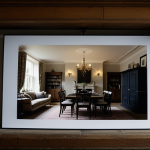Essential Ingredients for an Authentic Lancashire Hotpot
Creating a truly authentic Lancashire hotpot hinges on selecting the right Lancashire hotpot ingredients. Central to any traditional hotpot are cuts of lamb, layers of potatoes and onions, and carefully balanced seasoning that brings out the rich, comforting flavors this dish is known for.
The traditional hotpot essentials start with lamb, which is the star protein. Ideal cuts include shoulder or neck of lamb, as these have the right balance of tenderness and marbling to withstand slow cooking without drying out. Shoulder cut is especially popular because it becomes succulent and flavorful when cooked slowly. While lamb is preferred, some variations use mutton or beef, but these alter the classic flavour profile.
In parallel : How can you create a traditional British roast dinner at home?
Potatoes must be waxy rather than floury for the perfect topping texture—they hold their shape and create a pleasing golden crust while ensuring softness underneath. Varieties like Maris Piper or King Edward work well. Onions add sweetness and depth, and it’s best to use medium-sized brown or yellow onions to caramelize nicely during cooking.
Seasoning in a Lancashire hotpot should be simple but effective. Salt and black pepper form the base, but adding a bay leaf, fresh thyme, or dried herbs can elevate the dish without overpowering the natural flavors of the lamb and vegetables. Traditional recipes often pour lamb stock or broth over the layers before baking, creating moisture and intensifying the richness.
Also to see : What are the secrets to making a hearty Lancashire hotpot?
In summary, the lamb hotpot recipe essentials are:
- Lamb shoulder or neck (approximately 500g to 700g for 4 servings)
- 4-5 medium waxy potatoes, sliced thinly
- 2-3 medium brown onions, sliced
- Basic seasonings: salt, pepper, bay leaf, thyme
- Lamb or beef stock to moisten the layers
Mastering these Lancashire hotpot ingredients ensures a dish that is hearty, flavorful, and unmistakably traditional.
Step-by-Step Preparation and Cooking Instructions
Mastering the Lancashire hotpot method begins with properly preparing and slicing each ingredient. For the lamb hotpot recipe, start by trimming excess fat from your chosen lamb cuts—preferably shoulder or neck—and cut the meat into uniform cubes around 2cm wide to ensure even cooking. Next, peel and thinly slice your waxy potatoes, aiming for slices about 3mm thick to create the distinctive layered texture. The onions should be peeled and sliced into rings or half-rings, allowing them to caramelize evenly during baking.
When layering for an authentic Lancashire hotpot, alternate between the seasoned lamb pieces and onions, then cover the top with a generous layer of sliced potatoes. This layering technique ensures the traditional hotpot essentials—meat, vegetables, and starch—combine harmoniously. Season each layer lightly with salt, pepper, and herbs like thyme or bay leaf to build rich flavor throughout the dish.
Understanding how to cook Lancashire hotpot involves selecting the right cookware and oven setting. A heavy-duty, lidded casserole dish or a deep ovenproof baking dish flatters the slow-cooking process, retaining moisture and developing tenderness. Set your oven to a low temperature, around 150°C to 160°C (300°F to 320°F), and bake the hotpot covered for approximately two to two-and-a-half hours. This slow cooking method allows the lamb to become tender while the potatoes absorb flavorful juices beneath their golden crust.
To finish, remove the lid for the last 20-30 minutes to encourage a beautifully browned topping. This step is crucial for achieving the classic hotpot recipe instructions for a crisp, appetizing surface. Remember to check occasionally, and if the dish seems dry, a splash of lamb stock can help maintain moistness without diluting the intensity of the dish.
Following this tried-and-true Lancashire hotpot method guarantees a dish that respects tradition while maximizing flavor and texture at every stage.
Expert Tips and Tricks for Maximum Flavour
Creating a flavourful Lancashire hotpot requires more than just following the basic recipe; mastering hotpot cooking tips elevates the dish to authentic, rich perfection. One of the most effective ways to enhance your hotpot’s taste is by using high-quality lamb stock or broth. Pouring stock over each layer before baking ensures the meat stays moist, and the flavours meld beautifully during slow cooking. The gradual infusion of herbs like thyme and bay leaf deepens the aroma without overpowering the natural lamb taste.
Achieving the perfect golden potato topping is a hallmark of traditional hotpot recipes. To get this crisp, appetizing crust, remove the lid for the last 20 to 30 minutes of cooking. This exposure to dry heat encourages the potatoes’ surface to brown evenly. Another useful tip is to lightly brush the potato slices with melted butter or a splash of stock before the final bake—this adds richness and aids in browning. Timing here is crucial; too early removal of the lid may dry the dish, while too late prevents that signature crispy finish.
Avoiding common pitfalls is essential for authentic results. Resist the temptation to raise oven temperatures for faster cooking, which can toughen the lamb and dry out the dish. Instead, the low and slow approach ensures tenderness and deep flavour development. Likewise, over-layering with too many potatoes can hinder even cooking and dilute the meat’s essence; stick to a moderate amount for balanced texture and flavour.
By following these best hotpot practices, you ensure each bite of your Lancashire hotpot is tender, moist, and bursting with the deep, comforting flavours that define this beloved dish.
Serving Suggestions and Variations
Discovering how to enhance your serving Lancashire hotpot experience involves both presentation and thoughtful accompaniments. Traditionally, Lancashire hotpot is served directly from the baking dish, allowing diners to savor the layered textures and rich juices. For a more elegant presentation, consider scooping portions onto warm plates and garnishing with freshly chopped parsley or a sprig of thyme to echo the herbs infused during cooking.
Pairing your hotpot with classic sides complements its hearty nature. Steamed green vegetables, such as peas or green beans, provide a fresh contrast to the richness of the lamb hotpot recipe. Alternatively, a simple crisp salad with vinegar dressing cuts through the slow-cooked flavors with bright acidity. For beverages, robust ales or a medium-bodied red wine can elevate the dining experience by matching the dish’s depth.
Exploring hotpot variations opens creative avenues while respecting tradition. One popular alternative is using beef instead of lamb, which brings a different but equally satisfying flavor. Vegetarian options replace meat with root vegetables like parsnips, carrots, and mushrooms, layered with potatoes and onions and simmered in vegetable stock to maintain the essence of the dish. Some cooks experiment by adding pearl onions or leeks for additional sweetness and texture.
In summary, thoughtful serving Lancashire hotpot choices and creative hotpot variations ensure the dish remains versatile and inviting, perfect for both traditionalists and those seeking fresh twists on a beloved classic.






